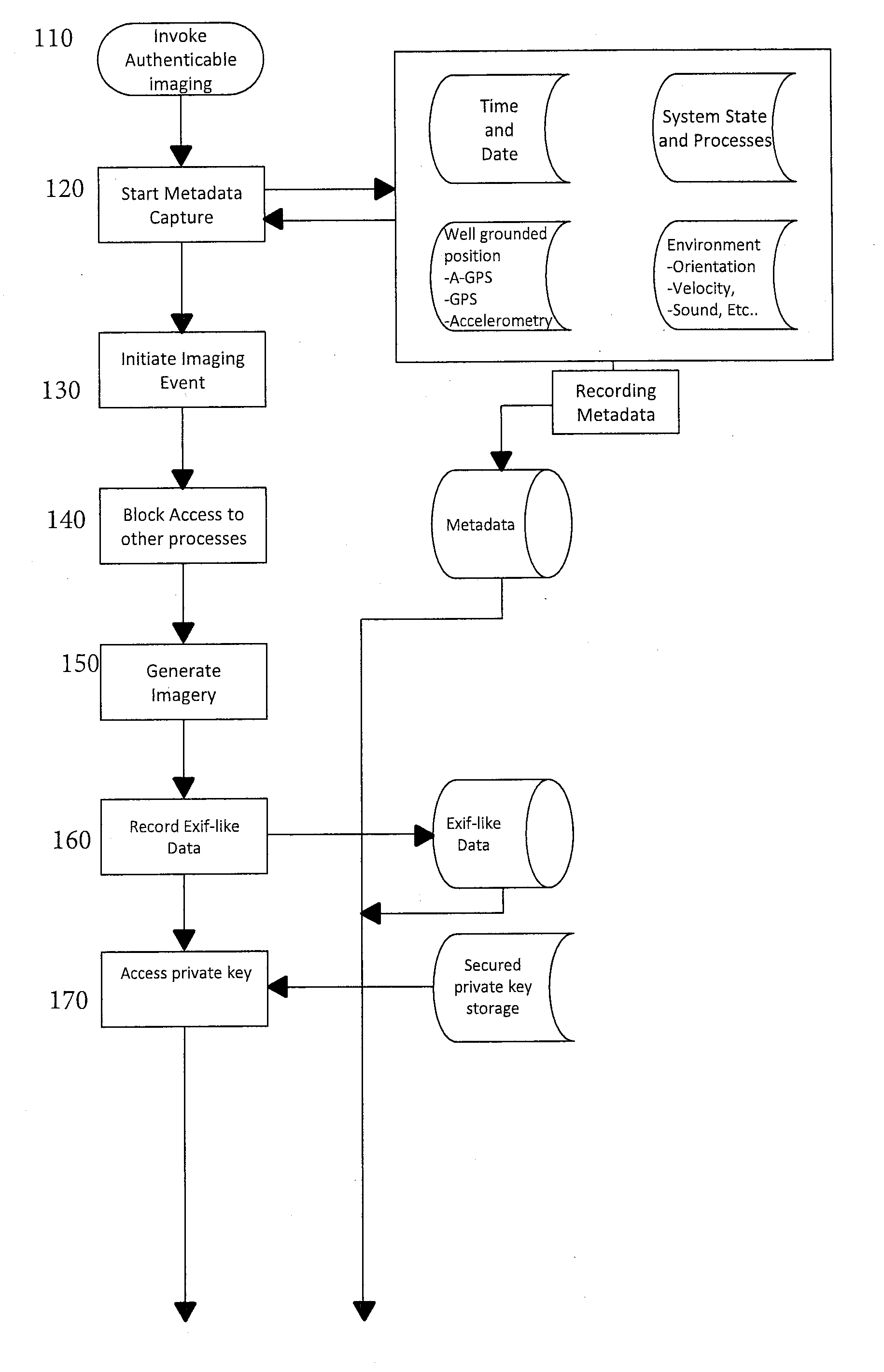Authentication and Validation of Smartphone Imagery
a technology for authenticating and validating smartphone imagery, applied in image watermarking, instruments, television systems, etc., can solve the problems of limited use of cell phone images or video to ascertain ground truth, uncertainty in the validity of cell phone imagery, and much more limited value as legal evidence, detective information, or scientific data
- Summary
- Abstract
- Description
- Claims
- Application Information
AI Technical Summary
Benefits of technology
Problems solved by technology
Method used
Image
Examples
Embodiment Construction
[0037]The method of the invention is implemented in a smartphone, digital camera, or any other device with image capture and communications capabilities, and that is capable of being programmed to carry out the steps of the method.
[0038]For convenience, the device will be referred to as a smartphone, which term is intended to include all types of portable device with image capture and communications capabilities. The programming may be built-into the smartphone, either as pre-loaded software or, at least in part, programmed hardware such as EEPROMs or circuitry, or the programming may be downloaded to the smartphone from an external source in the form of, for example, an “applet” or “app” available from an external source such as a webserver or app store. If downloaded from an external source, it is especially important to ensure that steps be taken to protect the software itself so that it cannot be altered, i.e., is in the form of “trusted code.” The method described herein assume...
PUM
 Login to View More
Login to View More Abstract
Description
Claims
Application Information
 Login to View More
Login to View More - R&D
- Intellectual Property
- Life Sciences
- Materials
- Tech Scout
- Unparalleled Data Quality
- Higher Quality Content
- 60% Fewer Hallucinations
Browse by: Latest US Patents, China's latest patents, Technical Efficacy Thesaurus, Application Domain, Technology Topic, Popular Technical Reports.
© 2025 PatSnap. All rights reserved.Legal|Privacy policy|Modern Slavery Act Transparency Statement|Sitemap|About US| Contact US: help@patsnap.com



